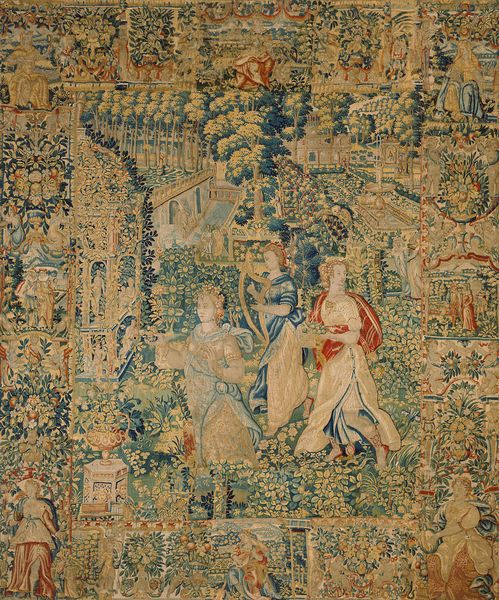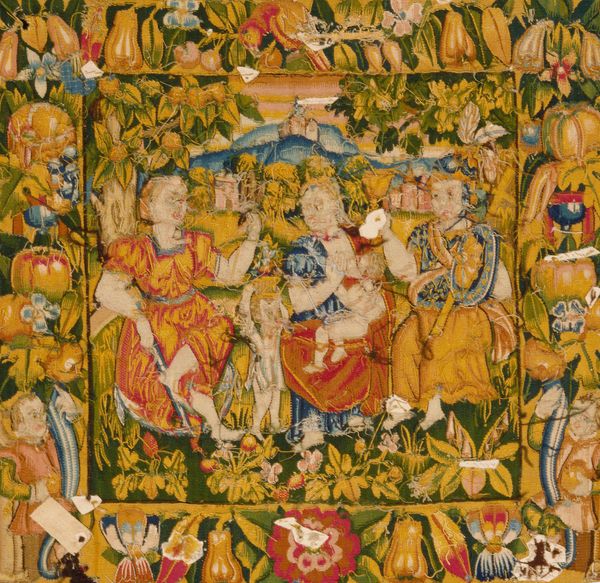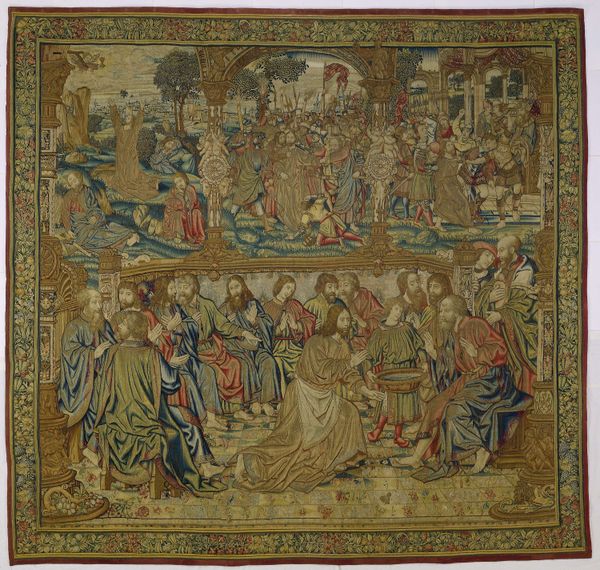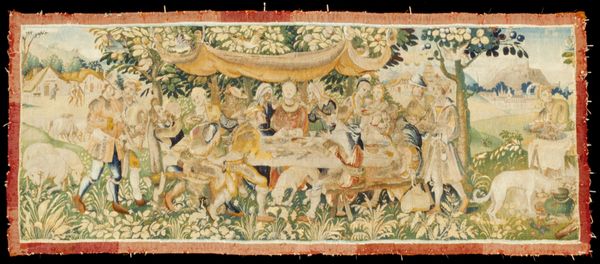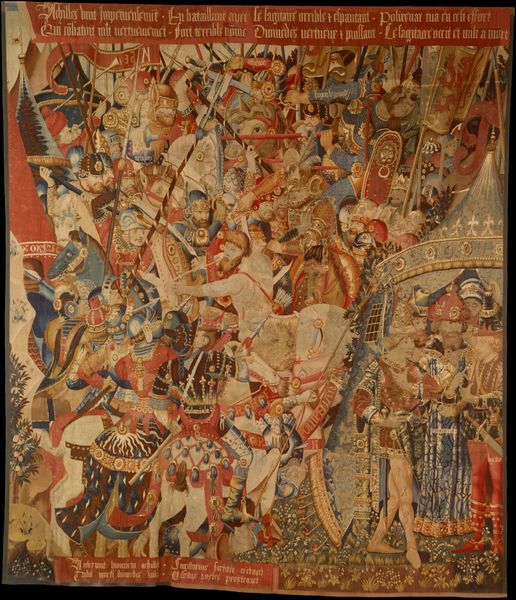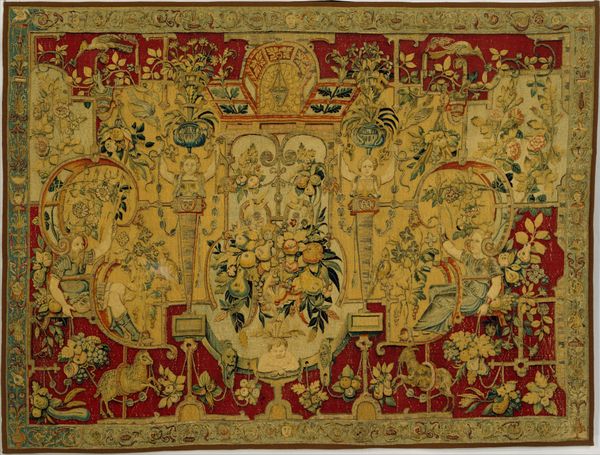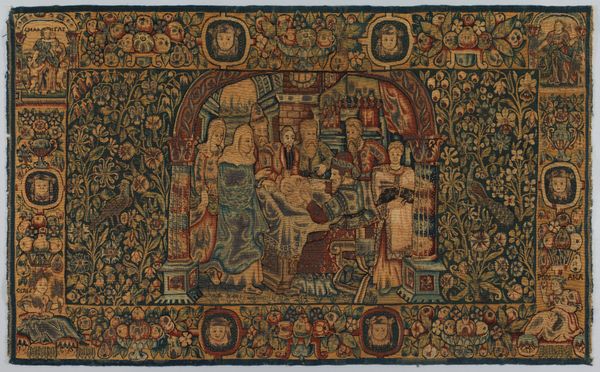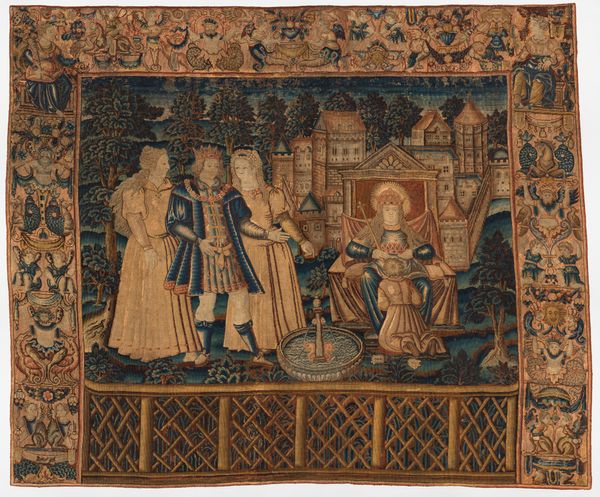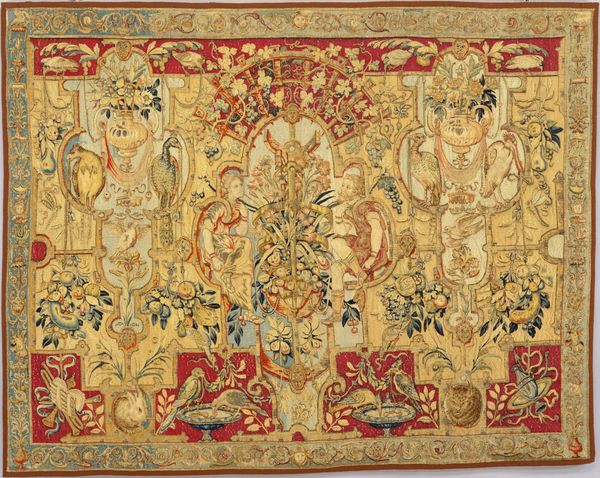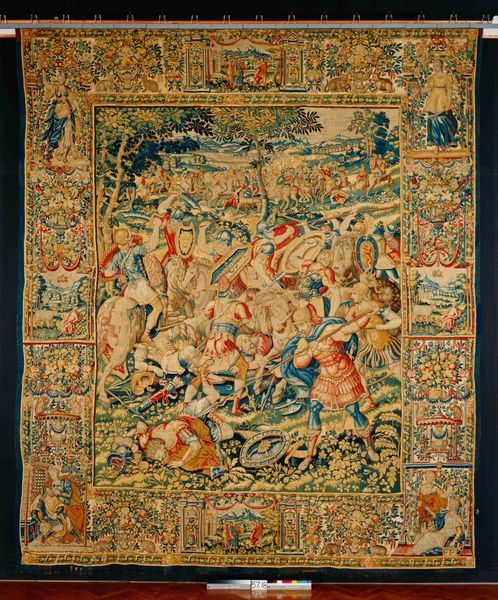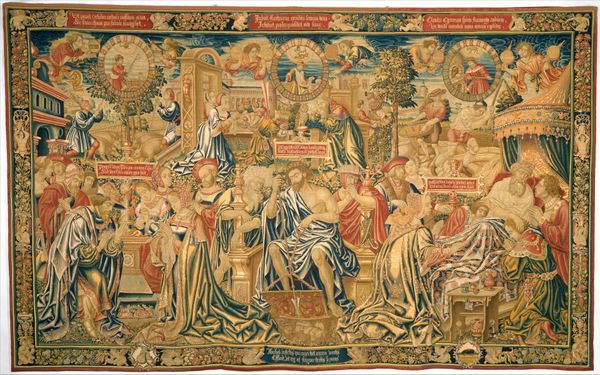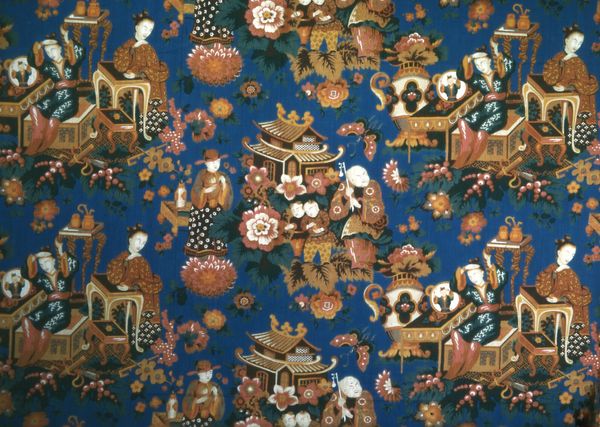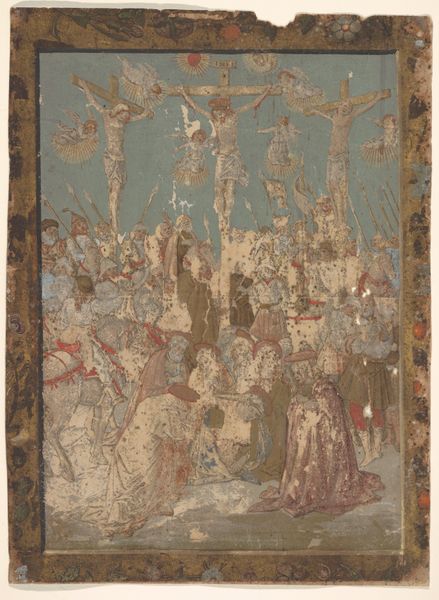
fibre-art, weaving, textile, wool
#
fibre-art
#
medieval
#
narrative-art
#
weaving
#
landscape
#
textile
#
wool
#
figuration
#
france
#
mixed media
Dimensions: 135 x 128 1/4 in. (342.9 x 325.76 cm) (irregular)
Copyright: Public Domain
This tapestry, whose maker is unknown, shows an aristocratic hunting party amidst a verdant, flowering landscape. The central motif, the falcon, held proudly on the falconer’s wrist, speaks of status, leisure, and a complex relationship between man and nature. The falcon motif echoes through time. We can see it soaring in ancient Egyptian art, where Horus, the falcon-headed god, symbolizes protection and divine power. Later, in medieval Europe, falconry became an aristocratic pastime, a visual language of nobility and control. This image, however, presents an intriguing psychological tension: the hunter masters the bird, yet the bird embodies freedom. It is a dance of power and desire, resonating with the subconscious human yearning to transcend earthly limitations. Note the cyclical progression—from deity, to symbol of nobility, to the modern-day emblem of luxury brands. The falcon persists, transformed yet still carrying echoes of its ancient power.
Comments
minneapolisinstituteofart almost 2 years ago
⋮
This fragment of a larger tapestry depicts lords and ladies hunting with falcons. It shows various aspects of handling the birds—they are carried on a gloved fist, with jesses (straps) and bells attached to their legs, heads hooded till flight time—and the actions and attire of the nobility who enjoyed this social sport. During the 1400s, tapestry designers often indicated perspective by arranging scenes one above the other. Figures near the bottom are meant to be closest to the viewer, while those near the top are farther away. Here, at top center, two falcons attack a heron.
Join the conversation
Join millions of artists and users on Artera today and experience the ultimate creative platform.
